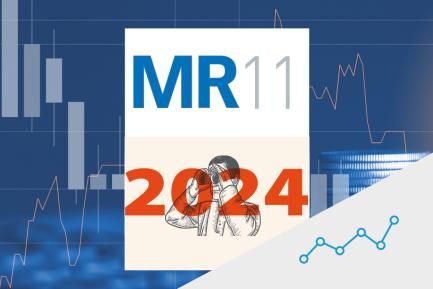Investor sentiment gradually improves

In April, investor sentiment continued to recover thanks to two major aspects: the increasingly close prospect of a sustained economic revival, led by the good performance of economic activity in the US and China, and the continuation of very substantial support measures in both the fiscal and the monetary spheres. These two factors were joined during the month by the successful start of the Q1 corporate earnings campaign on both sides of the Atlantic. The Fed and the ECB, meanwhile, provided some relief to the markets by reiterating their messages of patience, commitment and continuity, with a highly dovish monetary policy for the coming months. Over the month as a whole, all of these factors helped to reduce volatility in the financial markets and led investors to cautiously increase their preference for higher-risk assets linked to the business cycle. However, the financial environment remains shrouded by uncertainty due to the evolution of the pandemic itself and the high valuations in some market segments, as well as the risks of overheating in certain regions and the imbalances that an uneven global recovery could generate.

As expected, the Fed kept its stimulus measures unchanged at its April meeting (rates in the 0.00%-0.25% range, and asset purchases at a monthly rate of around 120 billion dollars). The institution acknowledged the improvement in US activity and employment since March, driven by the lifting of restrictions and the implementation of new fiscal stimuli, but insisted that the recovery is still incomplete, especially in the labour market. It also reiterated its view that the inflation spikes in 2021 are due to temporary factors, so they should not condition monetary policy decisions. In this regard, Fed Chairman Jerome Powell reaffirmed the institution’s intention to maintain the current monetary stimuli over the coming months and recalled that, when consideration is eventually given to withdrawing them, this will be communicated well in advance. These messages helped to calm the nerves of investors in the US fixed-income market, and following the sharp rise in interest rates in the first few months of the year, April brought a relaxation of the long tranches of the nominal rate curve (of around –10 bps on the 10-year bond, bringing the rate to 1.63%) triggered by the decline in real rates

Like the Fed, at its April meeting the ECB also kept official interest rates low and assured the continuation of the stimulus programmes adopted during the health crisis. Indeed, the ECB also noted that the spikes in European inflation are due to technical and temporary factors, so they should not influence its actions. ECB President Christine Lagarde insisted that the dovish financial conditions will be maintained and reiterated that during Q2 the institution will conduct purchases under the PEPP at a «significantly higher» pace than in Q1. On this point, and to avoid discrepancies among analysts, Lagarde recommended tracking the monthly rather than weekly data in order to correctly assess the acceleration in the rate of purchases. The German sovereign yield curve, meanwhile, rose to –0.20% (+9 bps in the month), widening the gap with euro area periphery debt despite the ECB’s purchases.


In April, the major stock market indices continued the trend of growth and low volatility of recent months. On this occasion, part of the improvement in investor sentiment was due to the start of the Q1 corporate earnings campaign in the US and the euro area. Specifically, up until the time this report was written, around 90% of the S&P 500 companies that had published their figures had exceeded analysts’ expectations, with the technology and financial sectors leading the recovery in earnings. The S&P 500 thus reached new all-time highs and ended the month with gains of around 5%. In the euro area, while the presentation of earnings is somewhat further behind, the stock markets followed a similar trend (EuroStoxx 50 +1.4%), with the Ibex 35 and the PSI-20 registering gains of over 2.5%.

In the context of a yielding of long-term interest rates in the US and patience on the part of the Fed, the dollar receded against most advanced and emerging-economy currencies, while the euro stood at around 1.20 dollars. As in March, the Turkish lira was the focus of the most volatile episodes in the face of the sharp rise in inflation (16% year-on-year in March) and the rise in infections. The Brent oil price, meanwhile, rose to 67 dollars a barrel, spurred by improved expectations for crude oil demand this year, as well as by investors’ confidence in OPEC and its allies’ ability to manage supply. At the end of April, the oil-producing countries together ratified the decision to maintain the gradual pace of increases in production up to 2 million barrels a day by July. In addition, the revival of the business cycle and the acceleration of the decarbonisation and infrastructure plans in the US triggered a rise in the price of industrial metals. This was particularly the case for the copper price, which reached its highest point in recent decades and has risen by around 30% so far this year.



